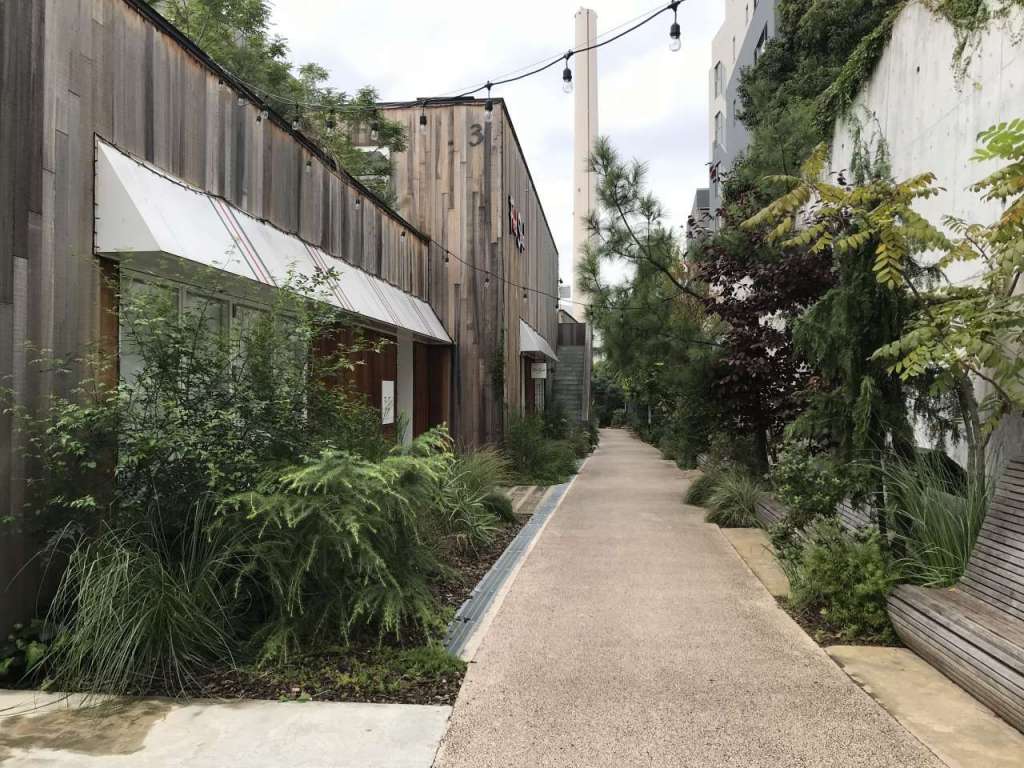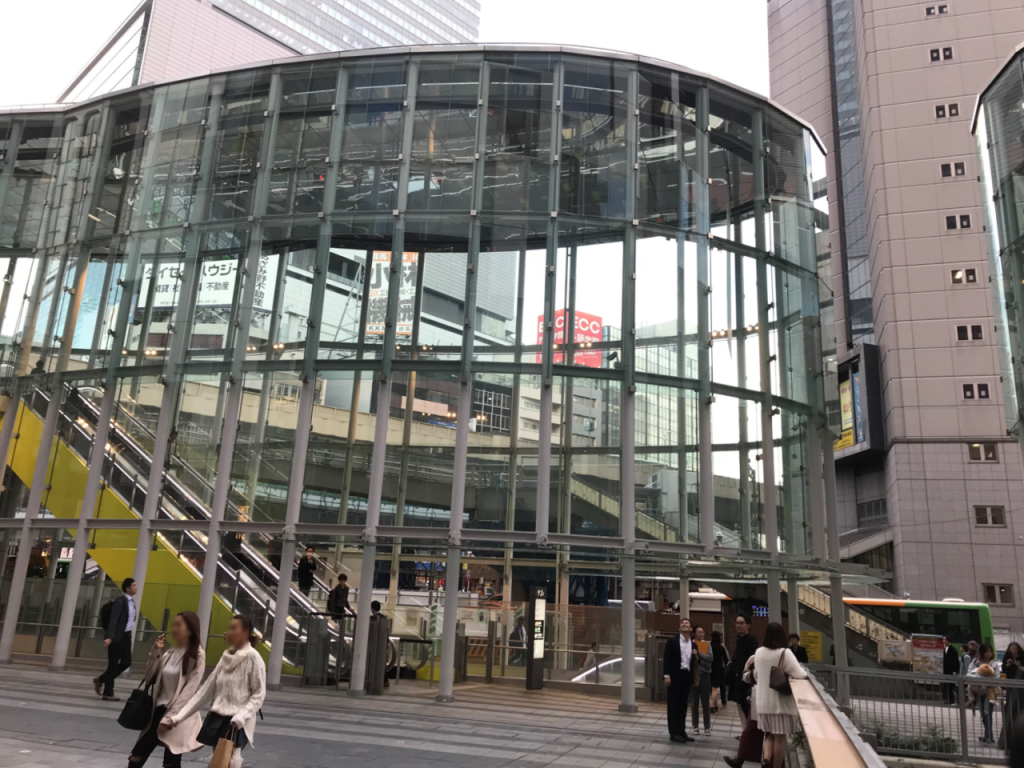“Tokyo Review 057” Shibuya area-11
A Strolling Route from Log Road Daikanyama to Shibuya STREAM
The undergroundization project of the Tokyu Toyoko Line required a large amount of construction work. It required relocating the railroad tracks from the level above JR Yamanote Line to the level below the ground as deep as the fifth basement. The Tokyu Toyoko Line heading for Shibuya runs on elevated tracks for some time after leaving Nakameguro Station, but due to the topography, it goes down to the first basement level around Daikanyama Station. Along the former route, it gradually ascends to the elevated level around Shibuya Station, while along the new route, it gradually descends to the fifth basement level.
The former track site of the section between Daikanyama Station and Shibuya Station that ran on the ground has been rebuilt as the “LOG ROAD Daikanyama.” I have been there the other day and walked from Daikanyama to Shibuya. After a short walk from Daikanyama Station, I found a humble entrance among the residential area. I felt the sense of scale that the city of Daikanyama has, although the location is not a commercial area. Instead of stuffing up the shops tightly, five stores with outer walls made of red cedar wood are laid out in a certain distance from each other. In a landscape created by seasonal flowers and rich greenery, you can feel at ease just by walking. There are terraces and benches in various places, making the place suitable to enjoy a relaxing walking with conversation.
Passing over the JR Yamanote Line using the pedestrian bridge, we can get closer to Shibuya. In the past, the Tokyu Toyoko Line would have overpassed the Yamanote Line around here. Getting down to the Shibuya side, a new linear shaped building is on the other side of the street, the site of which would make everyone assume there were railroad tracks. This is the Shibuya Bridge, which has some tiny stores and a small hotel. As I walked through the open corridor inside the building, I noticed that there are numbers drawn on the pillars of the building. Such numbers as 73 and 72, gradually decreasing. As I went a little further, there were objects like pillar stumps, like grass on the promenade, and there are also continuous numbers. When I came back to Shibuya Bridge, I found that the pillars of the corridor, like an open corridor, and the circular clock descending from the ceiling, are exactly the platform of the station. Are they here to remind us the memory of the tracks of the Tokyu Toyoko Line that once existed?
As you approach Shibuya Station, you will find a pocket park along the Shibuya River. Something like a bench looks like a re-use of a U-groove if you look closely. Going further, we arrived at the place where the Shibuya River appeared on the ground at the event plaza located on the south side of Shibuya Stream. Purified water flows between the newly renovated seawalls, creating a landscape with water that was not on the front stage of Shibuya, such as the “wall spring” that used the river walls.



